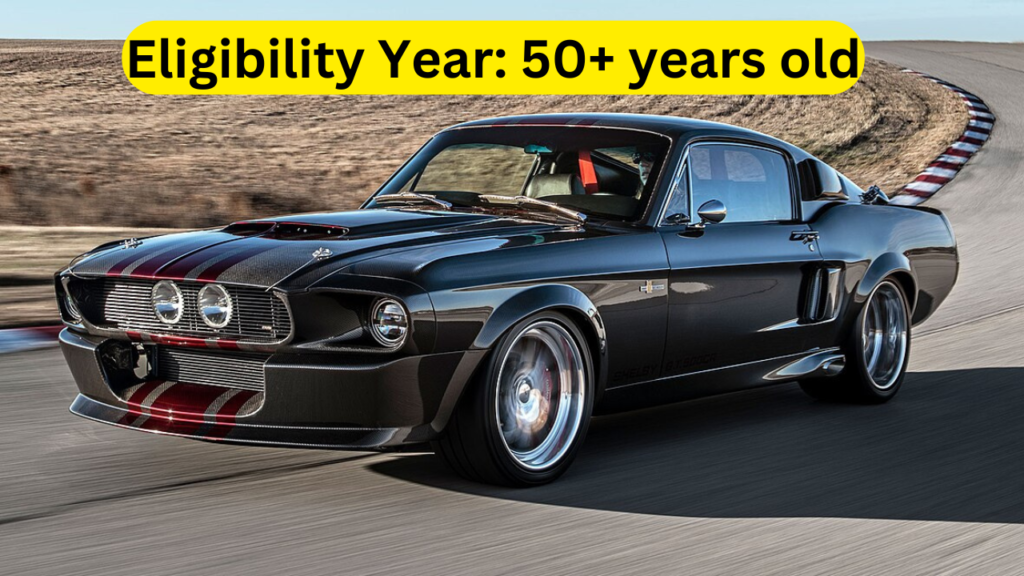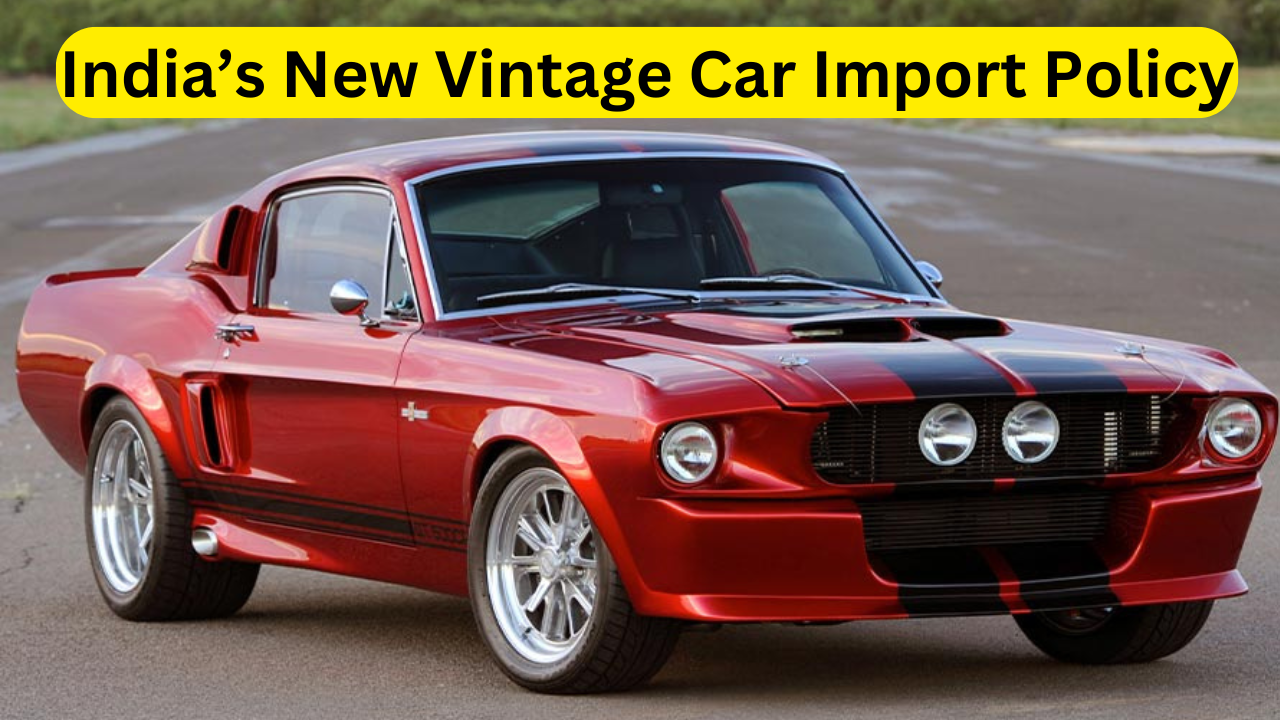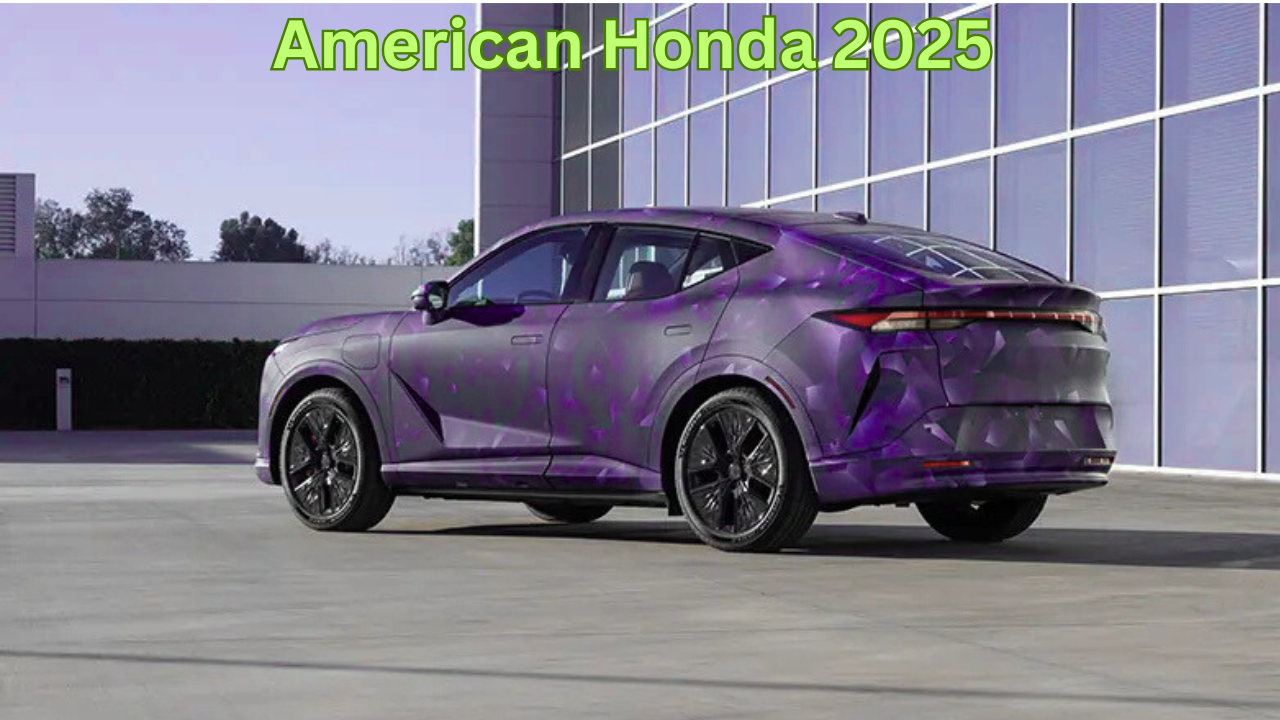India’s New Vintage Car Import Policy: India has long been known for its high tariffs and complex taxation policies when it comes to automobile imports. For decades, auto enthusiasts have struggled with strict regulations and exorbitant fees, making it almost impossible to bring vintage beauties into the country. However, things are changing, and there’s a reason for classic car lovers to rejoice! The Indian government has relaxed its vintage car import policy, allowing collectors to import older cars with fewer bureaucratic hurdles. But there’s a catch—while the process has become smoother, it is not entirely free of costs and restrictions.
Previously, only cars manufactured before 1950 were eligible for import under the “vintage” category. This restriction limited the options for enthusiasts looking to add classic vehicles to their collections. Now, the government has updated the rule, allowing cars that are 50 years old or older to be imported. This means that as of 2025, vehicles built in 1975 or earlier can enter India. Furthermore, from 2026 onwards, cars from 1976 and earlier will qualify. This rolling timeline ensures that every year, a new batch of classic cars will become eligible for importation.
However, this new regulation doesn’t mean that importing vintage cars will be cheap or easy. While enthusiasts no longer need a special import license, they still have to pay hefty duties and taxes. Importers will be charged customs duty, GST, and a registration fee, which could sum up to a staggering 250% of the car’s traded value. Additionally, these cars must comply with India’s Motor Vehicles Act, 1988, and Central Motor Vehicles Rules, 1989. Some exemptions may be granted based on the historical value of the vehicle, but in most cases, emissions standards must still be met. This article explores the key details of the new policy, its implications, specifications, and how it affects India’s vintage car market.
Also read: 2025 KTM 390 Adventure X
Vintage Car Import Policy: Features & Regulations
1. Eligibility Criteria for Vintage Imports
- Cars must be at least 50 years old to qualify as a “vintage import.”
- Previously, only pre-1950 cars were allowed; now, rolling eligibility applies each year.
- The car’s age is determined from its first registration date after the initial sale.
2. Duties & Fees for Importing Vintage Cars
- Importers no longer require a special import license.
- All imported vintage cars must pay customs duty, GST, and registration fees.
- Duties can reach 250% of the car’s traded value.
3. Restrictions on Resale
- Imported vintage cars cannot be resold immediately.
- A 5-year no-sale restriction applies from the import date.
- Only individual buyers (not dealers or brokers) are allowed to import these vehicles.
4. Legal & Compliance Requirements
Vintage Car Import: Specifications & Features
Technical Specifications
| Feature | Details |
|---|---|
| Eligibility Year | 50+ years old |
| Import License Needed? | No |
| Duties & Fees | Up to 250% of value |
| Resale Restriction | No sale for 5 years |
| Compliance Laws | Motor Vehicles Act, 1988 |
| Emission Standards | Required (exemptions possible) |
| Registration Needed | Yes |
Performance & Design Considerations
- Vintage cars are often collector’s items rather than daily drivers.
- Many imports include iconic classic models like the Mercedes-Benz 300SL, Jaguar E-Type, or Porsche 911 (early models).
- Older cars have simpler mechanical systems, often relying on carburetors instead of fuel injection.
- Depending on the model, some classic cars offer V8 or inline-six engines, delivering raw mechanical performance.
Pricing & Expected Costs
- Classic car prices vary based on make, model, and condition.
- Import duties alone can double or triple the total cost.
- Registration fees and additional restoration costs should also be considered.

Why This Policy is a Game Changer
- Encourages Classic Car Culture: More collectors can now legally own classic cars in India.
- Prevents Dealer Exploitation: The no-sale clause ensures that vintage cars stay in personal collections.
- Eases Import Process: Removing the need for an import license simplifies ownership.
- Aligns India with Global Trends: Many countries have similar vintage import laws, making India part of the classic car scene.
- Promotes Automotive Heritage: Helps preserve and celebrate historically significant automobiles.
India’s New Vintage Car Import Policy Conclusion
India’s updated vintage car import policy is a revolutionary step for classic car enthusiasts. By allowing the import of vehicles that are 50 years old or older, the policy opens new doors for collectors, restoration experts, and automobile historians. It marks a significant shift from previous restrictions that severely limited the availability of classic cars in the country.
While the policy simplifies the import process by eliminating the need for an import license, the high duties and fees remain a challenge for many buyers. The cost of bringing a vintage car into India can be substantial, but for true enthusiasts, the ability to own a piece of automotive history justifies the expense. The five-year no-sale restriction ensures that the market remains genuine and does not become a hub for commercial reselling.
This policy aligns India with international standards, fostering a more inclusive and passionate vintage car culture. The exemption possibilities for emission standards further enhance the feasibility of bringing in historic models, ensuring that significant automotive heritage is preserved for future generations.
As we move forward, enthusiasts and policymakers must work together to refine the regulations further. A more structured approach to cost reductions and emission exemptions could make the process even more accessible. For now, the policy represents a major milestone, giving Indian classic car lovers a long-awaited reason to celebrate.
For those dreaming of owning a rare Mustang, Ferrari, or Rolls-Royce from the golden era, the time has come to make those dreams a reality. The new policy has made it possible—it’s time to explore, import, and relive the golden days of automotive excellence.
India’s New Vintage Car Import Policy FAQs
1. What is the new vintage car import policy in India?
The new vintage car import policy allows individuals to import cars that are 50 years old or older without requiring an import license. Earlier, only cars manufactured before 1950 were eligible, but now vehicles built up to 1975 can be imported, and in 2026, cars from 1976 or earlier will qualify. However, importers still need to pay applicable duties, taxes, and registration fees.
2. What are the charges involved in importing a vintage car under this policy?
While the need for an import license has been removed, importers must still pay several fees, including customs duty, GST, and registration fees. These costs can add up to 250% of the car’s traded value, making the process expensive. It is crucial to account for these charges before planning an import.
3. Can imported vintage cars be sold in India?
No, imported vintage cars under this policy cannot be sold in the domestic market immediately. There is a no-sale clause that prevents resale for a period of five years from the date of import. This rule ensures that vintage car imports are used solely by enthusiasts and not resold for profit.
4. Do imported vintage cars need to meet Indian emission norms?
Yes, vintage cars imported for use on public roads must comply with the Motor Vehicles Act, 1988, and Central Motor Vehicles Rules, 1989. However, due to their historic significance, certain exemptions might be granted from current emission standards. It is advisable to check with regulatory authorities before importing a vehicle.
5. Who can import a vintage car under this policy?
Only actual users or collectors can import vintage cars under this policy. Dealers and brokers are not allowed to import and resell these cars. This restriction is in place to prevent commercial exploitation and ensure that vintage cars are preserved by genuine enthusiasts.
6. What documents are required to import a vintage car?
Importers need several documents, including proof of the vehicle’s age, original registration details, customs clearance documents, and compliance certificates with Indian transport regulations. It is advisable to consult with a customs expert to ensure all paperwork is in order before proceeding with the import.
7. How does this policy benefit vintage car enthusiasts?
This policy benefits vintage car enthusiasts by making it easier to import classic vehicles without the bureaucratic hurdle of obtaining an import license. It allows collectors to own and preserve historic automobiles legally. Additionally, it ensures that these cars remain with genuine enthusiasts instead of being resold for profit, maintaining their authenticity and value.










